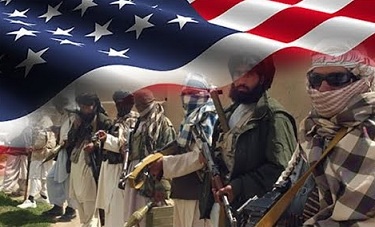Tariq Saeedi
After more than 18 months of off-again, on-again negotiations, the Taliban and the USA could possibly sign the peace accord on 29 February 2020.
Although the terms of the deal have not been made public officially, it is possible to guess some of the details based on the information from the various Taliban sources:
- There will be 7 days of peace from 22 to 29 February 2020, as a gesture of goodwill.
- The USA may not insist firmly on keeping intact the Ghani administration.
- The USA may not insist on including or excluding certain countries from the rebuild phase of Afghanistan.
- The Taliban may insist that the inter-Afghan dialogue, which may start on 1 March 2020, should be entirely an internal process with no involvement of any outsiders.
- The allied forces and the Afghan government will release about 5000 Taliban or other prisoners. The Taliban will release some 1000 prisoners of the government.
- The Americans may bring the number of their troops in Afghanistan down to about 8500.
The 7-day peace commitment will be crucial as the USA and the Taliban will both judge the ability and willingness of the other side to keep their word.
During this period, if the Taliban and the American covet peace genuinely, they will not only need to refrain from inflicting violence; they must also keep a vigilant eye on anyone who may be interested in carrying out false-flag operations. This could be some country, some party, some group, some individual, or a combination of any or all of these.
The Ghani administration has said that they will stop any operations against the Taliban during this period but will continue their confrontation with the Al-Qaeda, ISIS, or any other terrorist groups.
Because Afghanistan is a complex organism, always in flux, no one can predict as to what may happen the next week, or next day, or next hour.
If no deal-breaker takes place and the accord is signed, that would be the start of a strenuous process leading to either lasting peace or insane violence.
Here are some challenging factors:
- The Taliban don’t recognize the Ghani government. The Ghani government considers the Taliban a terrorist group. — The question will be: Who will decide as to which groups or parties can participate in the inter-Afghan dialogue.
- The Afghan government, or at least some part of it, believes that Dr. Ghani has won the presidential elections. Dr. Abdullah and his allies think that Abdullah is the winner.
- Rashid Dostum, after having lost all relevance, is back to the centre stage. He is rallying the northern regions to declare some kind of autonomy if their voice is not heard.
- There are proxies of several countries in Afghanistan and they may use the inter-Afghan dialogue to push their conflicting agendas.
Everyone inside and outside Afghanistan must understand that peace is the only option. For peace to take root there should be meaningful dialogue among the Afghans. For the dialogue to succeed, it would be necessary to weed out the proxies. The interest groups or the people, who have thrived because of the conflict and aspire to continue doing so, should also be excluded under a transparent process.
A credible way to nurture the inter-Afghan dialogue would be to make use of the standing offer of Turkmenistan.
The border town Serhetabat (Kushka) of Turkmenistan could be an ideal place for the inter-Afghan dialogue. It is approachable by road from all corners of Afghanistan.
It is sufficiently distant from any major cities. And it is certainly possible to provide all the necessary logistical support to the dialogue participants while protecting them against any kind of external influence. /// nCa, 24 February 2020
